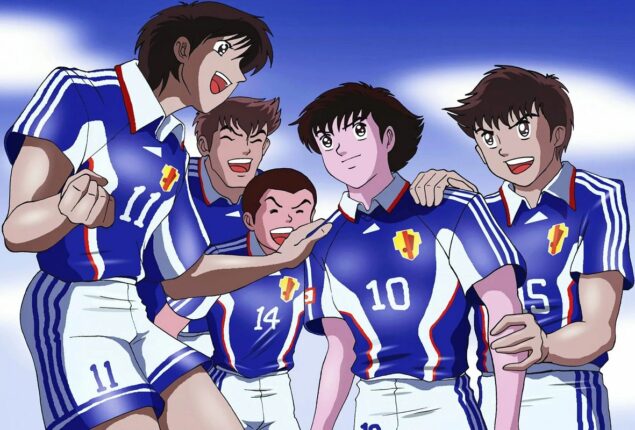World Record: 12 Spanish siblings combine age 1,058 years
A family of 12 siblings from Spain had a cumulative age of...

Spanish footballers adopted a Japanese cartoon character as their hero
When asked about their favorite players, Spanish football fans may give their opinion based on their region.
Andres Iniesta or David Villa might come to mind for the Catalans, and Iker Casillas or Fernando Torres for the Madrilenos.
The gamers, though, can claim that their hero isn’t even a genuine person or a former Spanish footballer.
He is Tsubasa, a fictional 11-year-old Japanese boy.
Animator Yichi Takahashi from Japan created the manga series “Captain Tsubasa,” also known as “Oliver y Benji,” “Olive et Tom,” “Supercampeones,” or “Captain Majid” in different parts of the world.
Oliver Atom’s character Ozora Tsubasa, who aspires to play professional football, is the focus of the television series.
His adventure starts on the football field of an elementary school in Japan and takes him to So Paulo, Brazil (the show is huge there), and Barcelona just before the World Cup.
In 1983, the TV anime series debuted. The series has sold more than 80 million copies worldwide and is known for its implausible but jaw-dropping, and occasionally episodes-long, kicks. It has been adapted into 15 serialized mangas, over 20 computer games, five television programs, and four motion pictures over the years.
Numerous footballing greats from Spain, such as Iniesta, Torres, and Villa, as well as luminaries from other countries, such as Lukas Podolski, Alessandro Del Piero, and Alexis Sanchez, have openly stated that Tsubasa sparked their passion for the game.
“Because of this, I started playing football… The cartoon was fantastic. In the past, Torres has stated, “I wanted to be Oliver.
After years of success in Europe, Torres, and Villa, incidentally, completed their careers there.
Podolski spent time with the Vissel Kobe of Japan.
“Since I was a young child, Captain Tsubasa has always been one of my greatest inspirations. Supporting Japanese football manga and that distinctive culture is an honor, according to Podolski.
Iniesta is currently the captain of Vissel Kobe.
So how did a young manga character from a football-averse Japan in the 1980s become the model for future football players in a country like Spain?
On the world football scene, Japan and Spain have extremely different relative importance.
Spain is a powerhouse and won the competition in 2010, as well as the Euros in 2008 and 2012. While Japan has improved over the last 20 years to become a constant qualifier for the men’s Global Cups—its women’s side was world champion in 2011—Spain is a powerhouse and won the competition in 2010.
In the 1870s, football was first played in both nations at the same time.
While employed at the Japanese Navy Academy in Tokyo, a British Royal Navy officer by the name of Archibald Lucius Douglas instructed his students in the sport.
Spanish students who had studied abroad in the UK and migrant workers from the UK helped spread the popularity of football in Spain.
In 1888, Japan hosted its first-ever official match, and Spain’s followed two years later.
However, Spain made the decision to create its first national team in the run-up to the 1920 Olympics in Antwerp, Belgium, while Japan waited until a decade later, and football’s trajectory in the two countries started to diverge.
They were on radically separate planes by the late 1970s. Since the team’s founding in 1930, Japan had failed to qualify for the World Cup, while Spain had done so four times, including a fourth-place result in 1950.
Catch all the World News, Breaking News Event and Latest News Updates on The BOL News
Download The BOL News App to get the Daily News Update & Follow us on Google News.